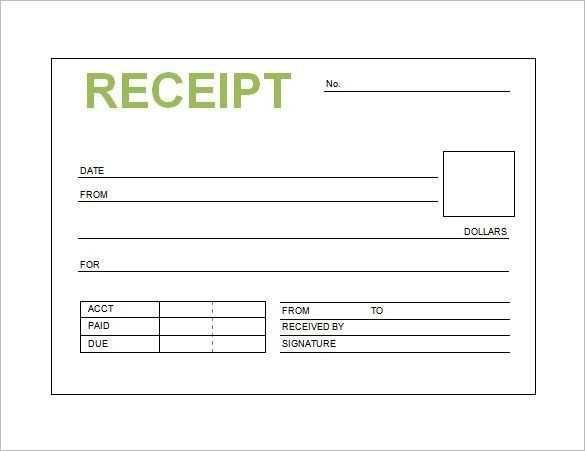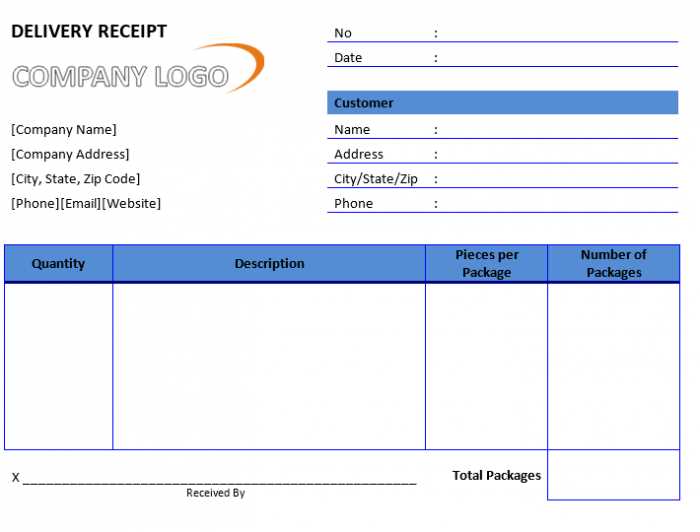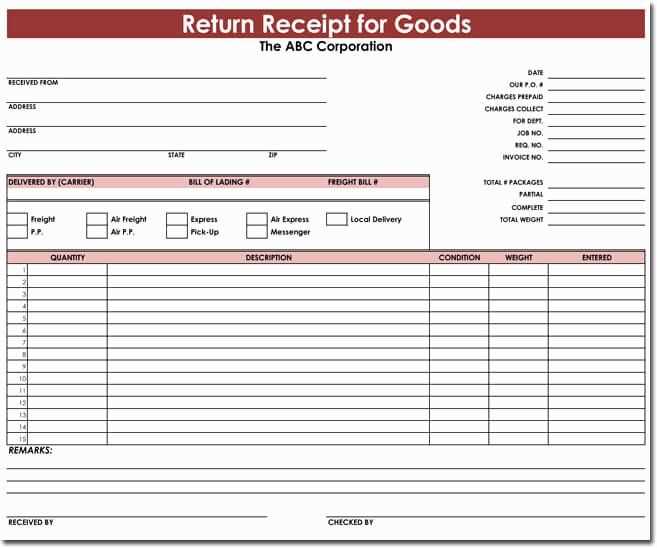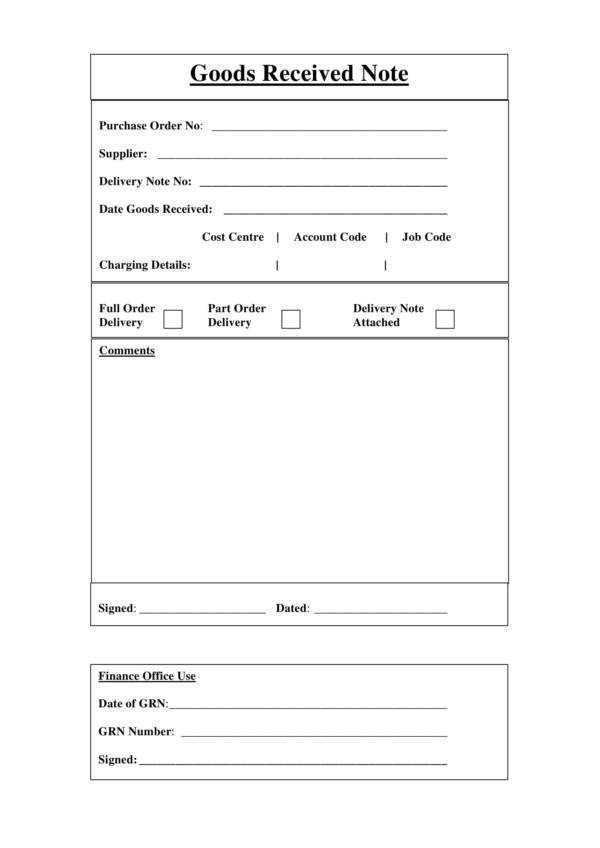
Use a free goods receipt template to streamline your inventory process and maintain accurate records. These templates help you track received items, verify quantities, and ensure proper documentation for future reference. By relying on a pre-designed format, you can avoid errors, save time, and stay organized.
Ensure your template includes essential fields such as item description, quantity received, date of receipt, supplier details, and any discrepancies. Customizable templates allow you to adjust them to fit your specific needs and make the receipt process smoother.
Whether you’re handling deliveries for a small business or managing large-scale inventory, using a goods receipt template is an effective way to maintain transparency in your supply chain. It simplifies the reconciliation of deliveries with purchase orders and minimizes the risk of miscommunication or lost items.
How to Customize a Free Goods Receipt Template for Your Business

To tailor a free goods receipt template to fit your business, focus on adding the details that matter most to your operations. Start by including your company’s logo and contact details at the top. This personalizes the document and helps clients recognize your brand immediately.
Step 1: Adjust Layout and Fields

Examine the template layout and remove any unnecessary sections. Add fields that align with the specifics of your inventory and delivery system, such as the item number, description, quantity, and price. Customize these fields to match your business’s unique needs, like adding a serial number for each item if applicable.
Step 2: Include Business-Specific Terms
Incorporate your terms and conditions or any policies that are relevant to goods receipts. This can include return policies, payment instructions, and delivery expectations. Adjust the language to reflect how you operate with customers, ensuring it’s clear and precise.
Finally, save the customized template in a format that works for your team, whether that’s PDF, Excel, or a Google Sheet, for easy distribution and record-keeping. This ensures all your receipts are consistent and professional, saving time and reducing errors in the long run.
Key Features to Include in a Goods Receipt Template
Include the date of receipt to track when the goods were delivered. This helps ensure accurate inventory records and timely processing. Next, clearly label the supplier information, including company name, contact details, and delivery address. This detail aids in verifying the shipment’s origin and resolving any disputes or discrepancies.
Always record the purchase order number. Cross-referencing with the order ensures that the correct items have been delivered. Additionally, include a detailed list of received items with quantities and descriptions. This enables quick verification of the delivered goods and facilitates inventory updates.
Another useful element is the condition of goods. Include a section to note if any items are damaged or missing upon delivery. This ensures accountability and allows for easy claims with suppliers.
Finally, don’t forget a section for the signature of the receiver. This validates the receipt and confirms that the goods were inspected and accepted.
How to Use a Free Goods Receipt Template for Improved Inventory Management

To improve inventory tracking, customize a free goods receipt template that matches your needs. Start by entering all necessary details, such as the supplier’s name, the items received, and quantities. This helps maintain accurate records of what’s been delivered and when, reducing errors in stock levels.
Ensure the template includes space for inspection notes, so that any discrepancies in quality or quantity can be documented right away. This prevents delays and allows for faster resolutions with suppliers.
Once the goods receipt is filled out, immediately update your inventory management system to reflect the new stock. Cross-check the recorded items against your purchase orders to verify that all items match the order and no extra goods have been delivered. This step ensures that your inventory is always up to date.
Implement a simple filing system for completed receipts. Store them electronically or physically for easy retrieval during audits or stocktaking. This organization reduces the time spent searching for documents and helps avoid mistakes when rechecking past transactions.
Regularly review and refine your template to align with changing inventory needs. A template that evolves with your business will continue to provide clear, useful records for effective inventory management.


